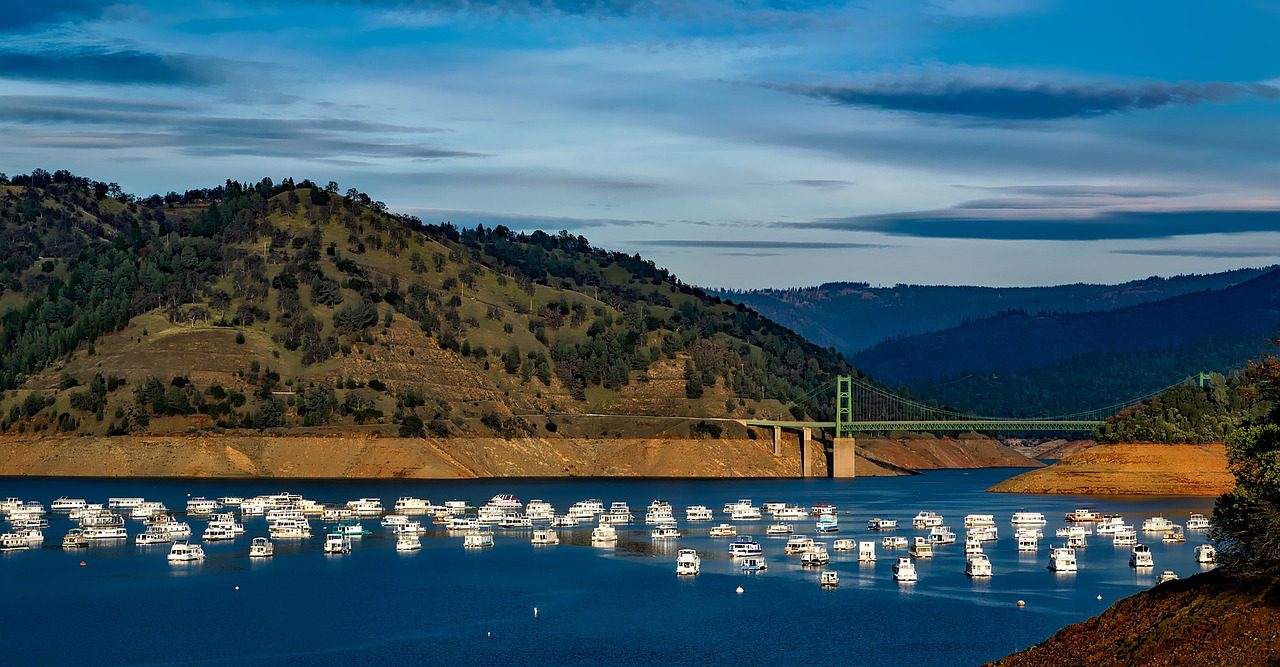November 24, 2023 — California’s major reservoirs are in much better shape compared to last year, with water levels currently at 124% of average. This improvement follows a period of severe dryness, where reservoirs were at about two-thirds of their usual levels. CalMatters reports that despite this positive change, the reservoirs are not entirely full. They serve the dual purpose of flood control and water storage, requiring space to be kept empty for managing potential floodwaters.
reports that despite this positive change, the reservoirs are not entirely full. They serve the dual purpose of flood control and water storage, requiring space to be kept empty for managing potential floodwaters.
El Niño and Rainfall Patterns.
The presence of El Niño, characterized by warmer Pacific Ocean waters, often raises expectations of wetter weather. However, its impact on California’s rainfall is not straightforward. The state has experienced a mix of dry, average, and wet conditions during past El Niño events. Currently, California’s water year has started drier than usual, with only about 45% of average precipitation since October 1st.
Managing Water Resources.
California’s water managers face the challenge of preparing for both potential floods and water scarcity. The state’s reservoirs , like Lake Oroville and Lake Shasta, are at around two-thirds capacity to manage these dual risks. While some view the released water as wasteful, it supports various ecological and agricultural needs.
, like Lake Oroville and Lake Shasta, are at around two-thirds capacity to manage these dual risks. While some view the released water as wasteful, it supports various ecological and agricultural needs.
Future Water Storage Strategies.
Efforts are underway to improve water storage and management. Projects like the Sites Reservoir, set to complete by 2030 or 2031, aim to store significant water quantities. Additionally, advancements in weather forecasting are being integrated to optimize reservoir operations. Groundwater recharge is another focus, with the Department of Water Resources capturing substantial water volumes for this purpose. The Metropolitan Water District’s recent $211 million groundwater bank in the Antelope Valley exemplifies these initiatives.
The Impact of Federal Funding on Water Conservation.
Despite the current storage levels in California, other factors such as the Colorado River conservation agreements are impacting the cost of water. Earlier this week, Politico took a deep dive into rising water price lines . Key findings include:
. Key findings include:
The Colorado River Conservation Deal.
A significant agreement among Arizona, California, and Nevada aims to conserve water from the Colorado River, with the states committing to save nearly a billion gallons of water by 2026. This initiative is supported by $1.2 billion from the Inflation Reduction Act, compensating water users for conservation efforts.
Concerns Over Rising Water Prices.
Investigations reveal that some of the water savings under new federally-funded contracts were already covered by less expensive, pre-existing agreements. This raises concerns about potentially higher future costs for water conservation. For instance, California’s conservation efforts partially rely on water that was already being saved under earlier, cheaper deals. The new federal program could lead to increased payments for water conservation, influencing the cost dynamics of future agreements.
Long-term Implications.
While the new contracts ensure that conserved water contributes to replenishing reservoirs like Lake Mead, they may also set a precedent for higher water conservation costs. This development is crucial as states continue to negotiate long-term strategies for reducing Colorado River water use.


Leave a Reply